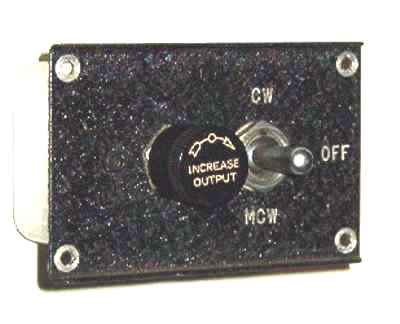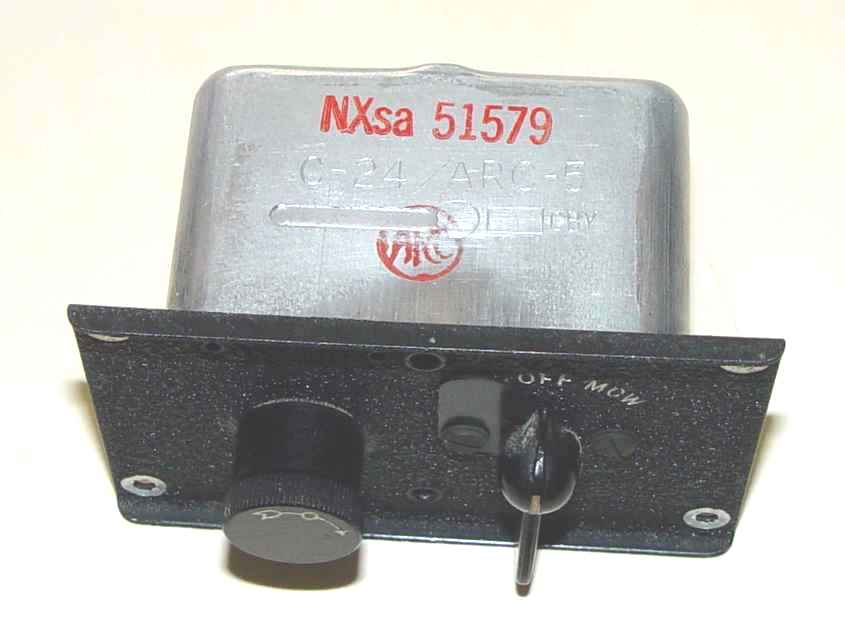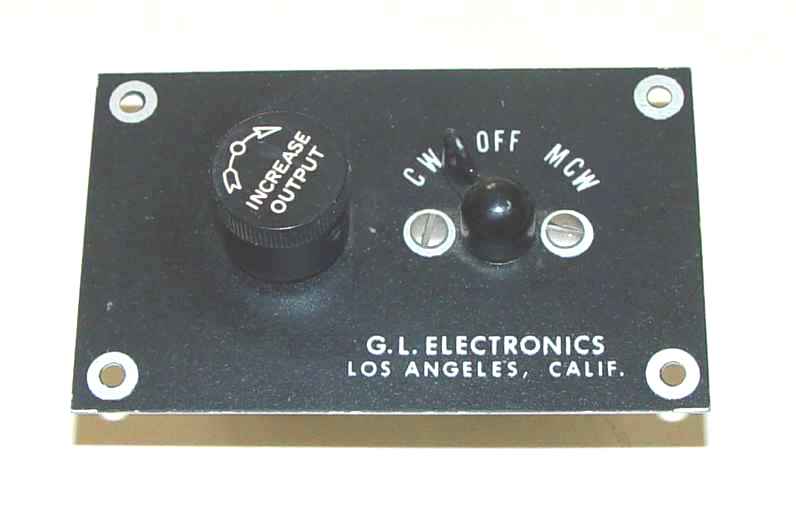Model RAT local control adapter, called a "switch panel" in the manual.
There are some special local control adapters made for the command set series of RAT and RAT-1, RAV, ARA, SCR-274N, and AN/ARC-5 that were intended to be used where remote control boxes were unnecessary or impractical. They were uncommon enough that after the war, there was a brisk business making replicas for hams who bought the receivers on the war surplus market and wanted some quick way to get them operating. Here is a review of the series, with photos of some of them.
One thing to remember is that none of the original military nomenclatured adapters has a phone jack in them - they were intended to be used in a receiver installed in a rack that has jacks in it. The other thing to remember is that the "gain" control is only an RF gain control. With the exception of the AN/ARC-5 set, audio gain was controlled by the interphone sets of the day, usually at the station box into which you plugged in your microphone and headphones.
The earliest of these local control adapters appeared in 1939 on the Navy model RAT and RAT-1 receivers, followed closely by the RAV series. There was a push in the late 1930s to have serial numbers on just about everything, a practice that was almost immediately stopped after the war started. The British had discovered that some intelligence could be gained by the enemy in terms of understanding production capacity and use of equipment by examining captured equipment for dates and other identifying numbers. This discovery led the Navy to begin grinding off their beloved "placed in service" dates and other identification data. Somehow, most of the RAT sets that I've seen escaped this fate, probably because they saw little service in combat zones. There was a complicated sequence of numbers assigned (and described in the manual) that could identify which local control adapter went with what serial number receiver, since two identical adapters were intalled in two different frequency range receivers.
Since I decided long ago to redistribute what few ARA/ATA pieces I had acquired, I don't have an example of the ARA local control adapter. One is not listed in the ARA/ATA manual. If it was ever actually fielded, it would have been the same CBY-23154 used in the RAT, RAT-1, and RAV sets. Only the engraving on top the rear cover would have been changed to reflect "A Unit of Model ARA Equipment".
Interestingly enough, there are two versions of the "official" FT-260-A used in the SCR-274N sets. The first had black wrinkle finish with engraved characters, the second is bare aluminum with black paint filled characters - brought out by Western Electric when they introduced their bare aluminum version of the command sets. The only difference between these and the earlier ARA version is the nomenclature lettering on the back cover and an inspection stamp behind the front panel on one end in red ink that says SC****A. Below are photos of the two types:
Last in the long series for the command sets, the C-24/ARC-5 came in two versions - both painted like the earlier black wrinkle models. The only significant difference between these and the earlier types is the disappearance of function lettering on the RF gain control knob, and the later version's use of photoluminescent paint in the RF gain knob arrow and the "aiming" groove on the mode switch so that aircraft UV lights could provide some indication of position in a dark cockpit. All the control boxes in the Flight Deck ARC-5 set light up nicely in a dark room when a wide area UV source is used. The later version of the local control replaced the old rotary switch with a three position toggle switch shown below, probably because the old switch was no longer being logistically supported.

A curious anomally


Finally, after the war several companies tried to fill the need for local control adapters for the ham radio market, given that WWII command receivers were selling for a couple of dollars each and thousands of them were being picked up by radio enthusasts. The one below seemed to be popular, based on ads in ham magazines of the period.
